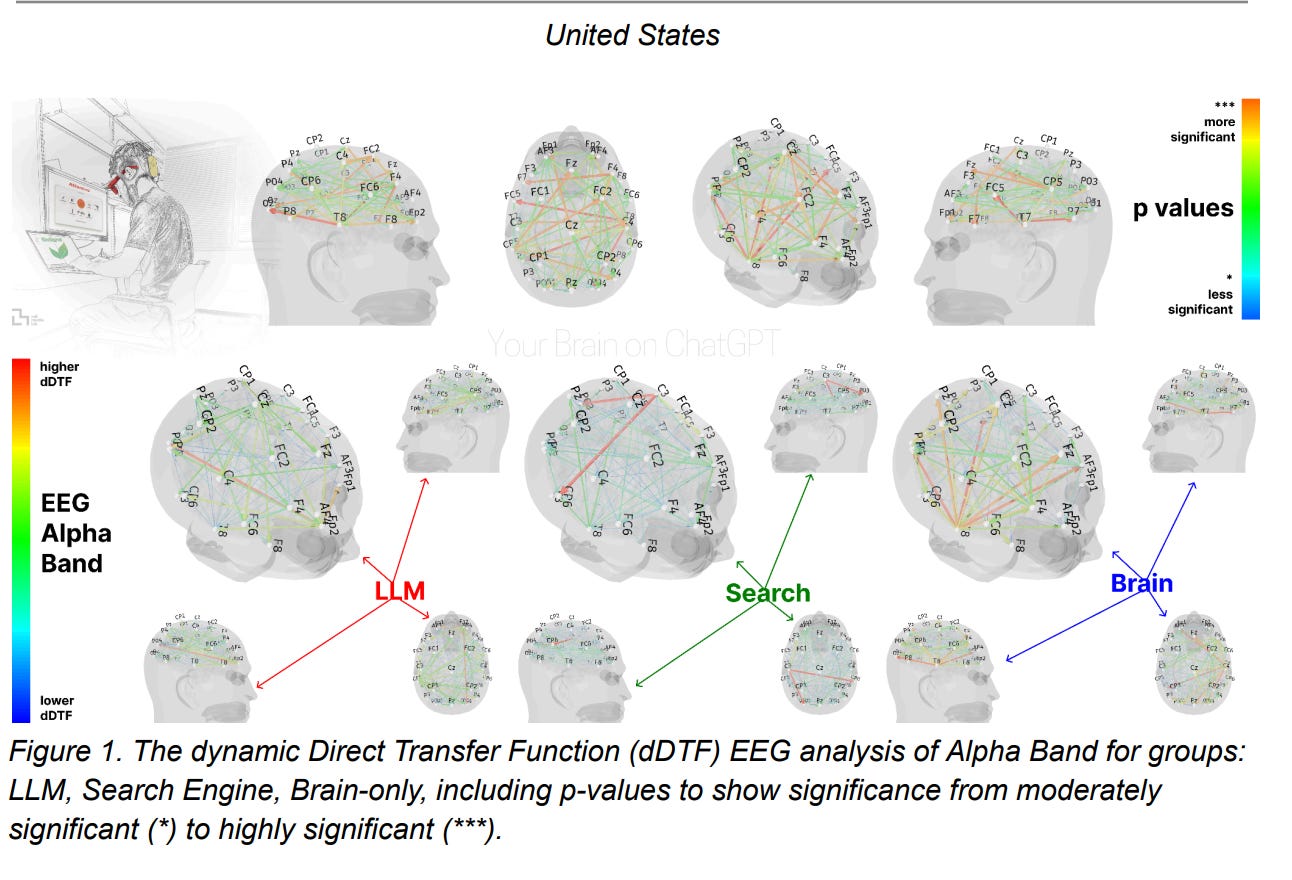The rapid buildout of artificial intelligence (AI) being integrated into every aspect of human life is happening with few guardrails.
For humans choosing to directly interface with the first generation AI rollout of large language models (LLM) like Open AI’s ChatGPT – chatbots that can have human-like conversations to complete various tasks, such as writing and coding, it’s been all sunshine and roses until now.
A new study out of MIT’s media lab looked at the brain activity of participants given essay writing tasks. Over the course of four months, three groups were investigated: those who only used LLMs, those who used search engines, and people who did it the old fashioned way with ‘Brain-only' (no tools)’ according to the study.
The participants were monitored with the following protocols:
“…electroencephalography (EEG) to record participants' brain activity in order to assess their cognitive engagement and cognitive load, and to gain a deeper understanding of neural activations during the essay writing task. We performed NLP analysis, and we interviewed each participant after each session.”
The researchers discovered the following:
“Brain connectivity systematically scaled down with the amount of external support: the Brain‑only group exhibited the strongest, widest‑ranging networks, Search Engine group showed intermediate engagement, and LLM assistance elicited the weakest overall coupling.”
Neuroplasticity is the brain’s ability to reorganize and rewire its neural connections, enabling it to adapt and function in ways that differ from its prior state. This process can occur in response to learning new skills. If we look through the lens of neruoplasticity, use of AI’s LLMs is causing neural de-evolution.
Did this study just uncover a feature of AI when interfacing with humans? An accumulation of cognitive debt?
The most consistent and significant behavioral divergence between the study groups, according to the MIT researchers, was observed in the ability to quote one's own essay. “Learning” was reduced as 83.3% of participants who used AI to write their essay failed to provide a correct quotation upon recall.
It comes down to brain wave states created in each group as the researchers describe:
“This difficulty maps directly onto the reduced low-frequency connectivity in LLM group, particularly in the theta (4-8 Hz) and alpha (8-12 Hz) bands, which are heavily implicated in episodic memory consolidation and semantic encoding [84, 103, 104]. These oscillations are typically strongest when individuals generate and internally structure content, rather than passively integrating externally generated information. The reduced dDTF strength in frontal and temporal nodes among LLM users likely reflected a bypass of deep memory encoding processes, whereby participants read, selected, and transcribed tool-generated suggestions without integrating them into episodic memory networks.”
What consequences does AI’s silent brain drain have on younger generations developing their creativity, their ownership of self autonomy as they expand their external and internal worlds to what is possible?
With early warnings of the multiple dangers of AI’s unchecked buildout going mostly unheeded, most leading global tech corporations have bet the farm on a racing artificial intelligence buildout. Companies like Google and Meta are funding the production of countless nuclear reactors to meet the energy needs.
[VIDEO: Former Google CEO Eric Schmidt]
Behind the greed, control, and futuristic hopes of ease and efficiency, is humanity racing down an AI road that will soon make our current way of life obsolete? Will vital parts of what makes us human be lost that we can’t get back?
The era of ‘social’ media connected us like never before yet has helped created a epidemic of loneliness and rising mental health issues in children and younger adults. Much like the microcosm example of spellcheck, which has served to atrophy the spelling ability of individuals, LLM’s are a greater step into a comfortable technological future where, with each great leap forward, it appears humans are releasing control of their natural growth along with their unimpeded ability to create.





